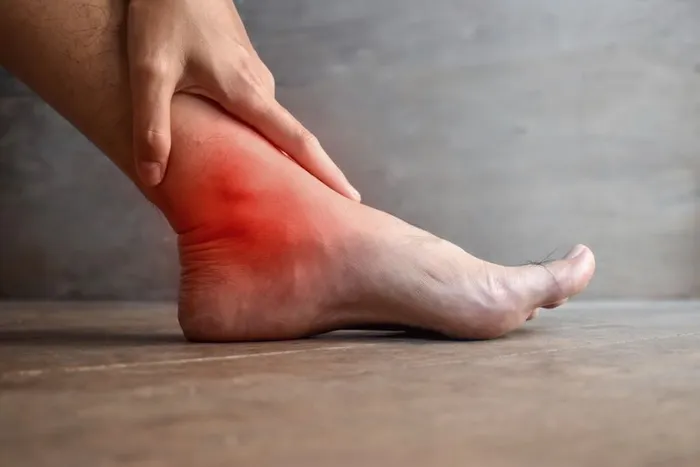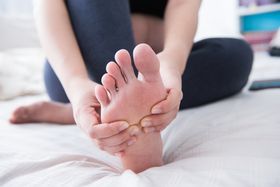Preventing Achilles Tendonitis: 5 Strategies That Are Vital to Know
Updated January 30, 2024.

Achilles tendonitis is a common cause of pain in the lower limbs, especially among runners. The condition occurs when the Achilles tendon becomes inflamed and is often associated with overuse.
There are means to treat this type of Achilles tendon pain, but prevention is far better. Unfortunately, complete prevention of Achilles tendonitis may be impossible. What you can do is reduce your chances of developing this foot condition.
5 Ways to Prevent Achilles Tendonitis
There are several ways to help prevent Achilles tendonitis in runners, which include:
- Doing warm-ups Ensure you warm up properly to prep your muscles for action before any activity. It helps to start slowly and gradually increase the intensity and duration of the exercise or training.
- Wearing the right shoes Always choose the most sports-appropriate shoes or simple shoes with proper arch support and cushioning. These properties will reduce strain on the Achilles tendon. You can insert orthotics for Achilles tendonitis in your shoes. Such insoles will provide firm arch support and extra cushioning, reducing pressure on the foot. One orthotic device that is particularly effective is a heel cup to help Achilles tendonitis.
- Exercising regularly Exercises for tendonitis are essential. Your range of exercises should include stretching and strengthening exercises for the calf muscles and plyometric and balance exercises for the body. They’ll help you better manage the strain that comes with your activities.
- Cross-training Alternate between high-impact activities, like running and jumping, and low-impact activities such as cycling and swimming, to give your body room to adapt and accommodate the strain.
- Close monitoring Watch how you exercise when you’re on medication like fluoroquinolones.
Risk Factors for Achilles Tendonitis
You should be extra vigilant if you have any of the risk factors below that predispose you to the condition.
Some of the main risk factors include:
- Gender It is most common in males.
- Age It occurs more frequently in people who are 30 and older.
- Physical or structural problems Tight or weak calf muscles, flat feet, heel spurs, and excess body weight can all contribute to an increased risk of Achilles tendonitis.
- Medical conditions Conditions like diabetes, hypertension, and psoriasis can increase your risk.
- Medications Those taking fluoroquinolones (a type of antibiotic) are at a greater risk of developing Achilles tendonitis.
- Improper training Inadequate warm-up, cold weather, inappropriate footwear, training on uneven surfaces, and sudden increase in exercise intensity can predispose you to Achilles tendonitis.
» Reduce the risk of Achilles tendonitis with insoles customized for flat feet
Signs and Symptoms of Achilles Tendonitis
Quick management and treatment of Achilles tendonitis are essential to avoid unnecessary complications. To do this, you need to recognize the first signs and symptoms of injury.
The following are common symptoms of Achilles Tendonitis:
- Mild, aching pain above the heel is a cardinal sign of Achilles tendonitis. The pain is typically palpable but worsens with activities.
- Warmth, swelling, stiffness, soreness, and thickening of the Achilles tendon
- Limited range of motion, causing difficulty walking and standing on your toes
- There may also be heel spur formation with insertional tendonitis (injury of the Achilles tendon at its point of attachment to the heel bone).
Ensure you consult a medical practitioner for an accurate diagnosis and treatment advice as soon as you notice any of these signs or symptoms.
Complications Associated With Achilles Tendonitis
Achilles tendonitis can lead to complications if not managed early enough. Again, running with Achilles tendonitis can often worsen the condition.
Some of the possible complications of Achilles tendonitis are:
- Achilles tendon rupture Tendonitis weakens the Achilles tendon, making it prone to a rupture. You may have ruptured the Achilles tendon if you experience any of the symptoms above, along with a sudden pop in your calf or heel. An Achilles tendon rupture is a medical emergency and may need surgery to correct.
- Abnormal gait Achilles tendonitis makes movement difficult, and the heel pain may change your posture. Over time, if the pain is not well managed, the adjusted posture may become your default, leading to an abnormal gait.
- Nodules If the tendon degeneration progresses, nodules may begin to form in the heel.
Achilles tendonitis can take weeks to months to heal, so it's best to address it in its early stages of development, long before it becomes a problem. You can position yourself for a healthier and safer experience as you run by training and exercising appropriately.
Remember to consult your healthcare professional to ascertain the best line of treatment and to recommend additional treatment approaches if need be.








